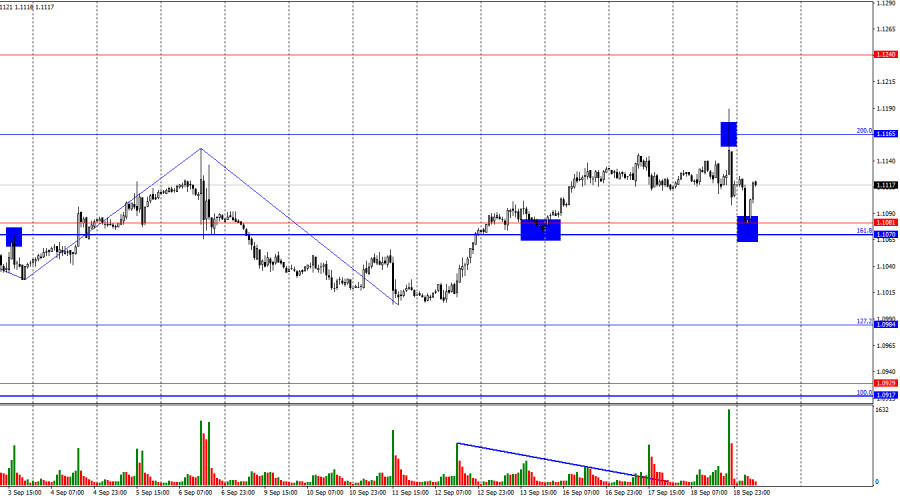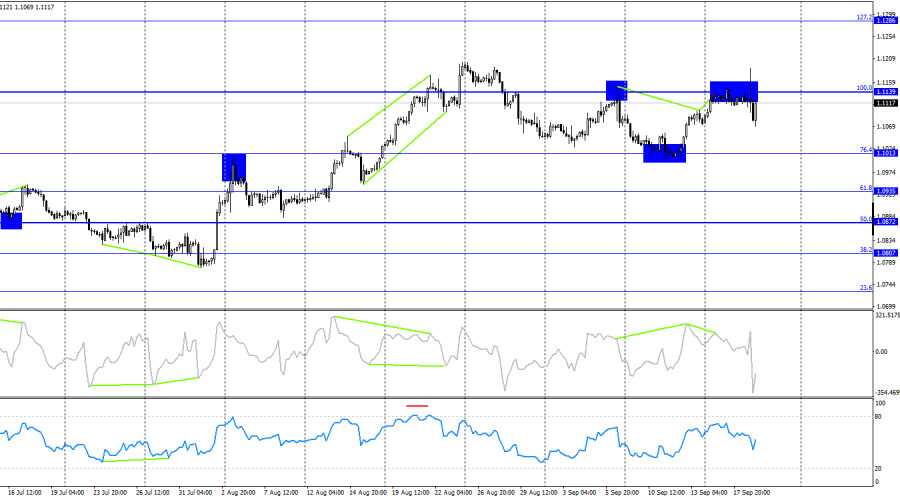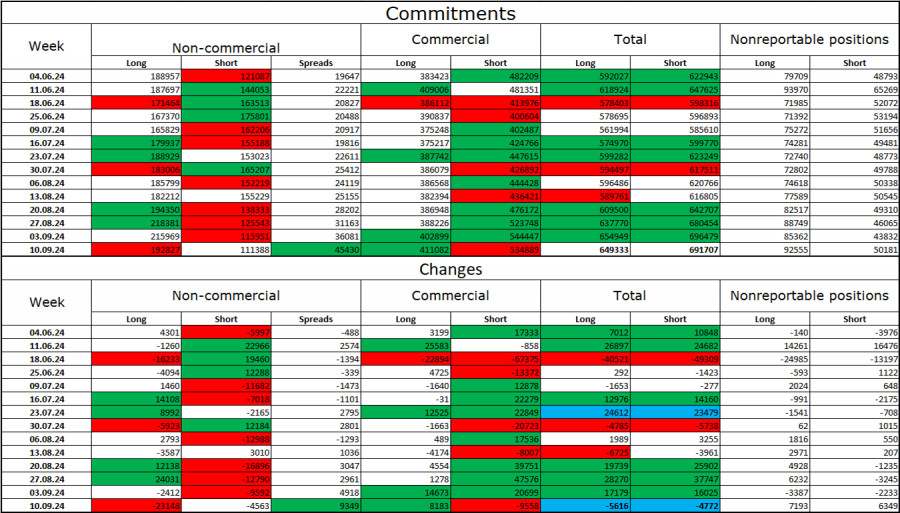
On Wednesday, the EUR/USD pair rose to the 200.0% corrective level at 1.1165, rebounded from it, then fell to the support zone of 1.1070–1.1081 and rebounded from that zone. Technically, the pair moved almost perfectly. A new reversal benefiting the euro suggests a return to the 1.1165 level. However, after yesterday's Federal Reserve meeting, I am even less inclined to expect further dollar weakness, and I will explain why below.

The wave pattern has become slightly more complex, but overall, it is not raising many questions. The last completed downward wave broke the low of the previous wave, while the last completed upward wave did not break the high of the August 26 wave. Therefore, the "bearish" trend is still in formation. It might be short-lived, but for it to end, we need a close above the high of September 6 at 1.1152. Yesterday, the pair only briefly broke this level but did not close above it, so I do not consider the trend to have shifted to "bullish."
The news on Wednesday was significant, but there were only a few key points. First, the Fed cut the interest rate by 0.50%, as most traders had expected, making it the most "dovish" scenario. Second, Powell made it clear that further rate cuts would not happen quickly. There could be two more 0.25% cuts by the end of the year and four more 0.25% cuts over the next two years. In my opinion, the market was expecting a more aggressive monetary easing. Thus, the dollar first alleviated market pressure regarding the initial easing, and second, the market may have realized that the total rate cuts will not be as significant as expected. We can now say that the market has fully accounted for the FOMC meeting, and I don't see any new reasons to sell the dollar. Below the 1.1165 level, I remain "bearish" and expect the pair to decline again.

On the 4-hour chart, the pair rebounded from the 76.4% corrective level at 1.1013 and rose to the 100.0% Fibonacci level at 1.1139. From this level, the pair has also rebounded, indicating the potential for a decline. The CCI indicator has formed two "bearish" divergences, significantly increasing the likelihood of a reversal benefiting the U.S. dollar. A decline could begin towards the 1.1013 level. If the pair consolidates above the 1.1139 level, further growth towards the next corrective level of 127.2% at 1.1286 can be expected, canceling the "bearish" scenario.
Commitments of Traders (COT) Report:
During the last reporting week, speculators closed 23,148 long positions and 4,563 short positions. The sentiment of the "Non-commercial" group turned "bearish" a few months ago, but bulls have actively dominated again recently. The total number of long positions held by speculators is 193,000, compared to 111,000 short positions.
I still believe that the situation will shift in favor of the bears. I don't see any long-term reasons to buy the euro. It's also worth noting that the Fed's September rate cut has already been largely priced in by the market. The potential for a decline in the euro remains significant. However, it should not be forgotten that technical analysis currently does not fully support a sharp fall in the euro.
Economic Calendar for the U.S. and Eurozone:U.S. – Initial Jobless Claims (12:30 UTC)U.S. – Philadelphia Fed Business Outlook Index (12:30 UTC)U.S. – New Home Sales (12:30 UTC)On September 19, the economic calendar contains three relatively unimportant entries. The impact of the news on trader sentiment today is expected to be minimal.
EUR/USD Forecast and Trading Tips:New short positions on the pair are possible after a rebound from the 1.1139 level on the 4-hour chart, with a target of 1.0984 or from the 1.1165 level on the hourly chart. Long positions can be considered if the pair closes above the 1.1139 level on the 4-hour chart, with targets at 1.1165 and 1.1286.
Fibonacci levels are drawn from 1.0917 to 1.0668 on the hourly chart and from 1.1139 to 1.0603 on the 4-hour chart.